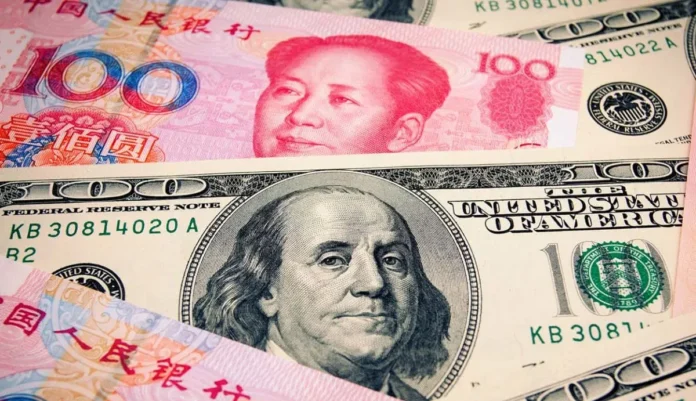Staff Reporter
The Chinese yuan fell to its lowest level in over 17 years on Wednesday, following a record drop in its offshore counterpart. The ongoing trade tensions between the U.S. and China continue to shake currency markets.
The onshore yuan closed the domestic trading session at 7.3498 per dollar, marking its weakest finish since December 2007.
This decline comes as the trade war between the world’s two largest economies intensifies. U.S. President Donald Trump’s “reciprocal” tariffs on numerous countries began Wednesday, with Chinese goods facing hefty duties of up to 104%.
In response, China’s top leaders are expected to convene as early as Wednesday to discuss strategies for boosting the economy and stabilizing capital markets, according to sources familiar with the situation.
Despite ongoing tariff pressures, China’s central bank is taking measures to prevent a sharp decline in the yuan. On Wednesday, sources with direct knowledge of the situation revealed that the People’s Bank of China has instructed major state-owned banks to reduce their purchases of U.S. dollars.
Analysts at Capital Economics noted that unless the recent U.S. tariff hikes are rolled back, China’s exports to the U.S. could more than halve in the coming years, even if the yuan weakens to 8 per dollar.
They estimate that this could reduce China’s GDP by 1.0% to 1.5%, depending on how much exports are rerouted through other countries. This potential impact is larger than previously anticipated and may lead to increased fiscal support from the government.
On Wednesday, the People’s Bank of China set the midpoint rate for the yuan at 7.2066 per dollar, marking the lowest level since September 11, 2023. While a weaker yuan could make exports cheaper and relieve some trade pressures, economists warn that a significant decline could lead to capital outflows and threaten financial stability.

